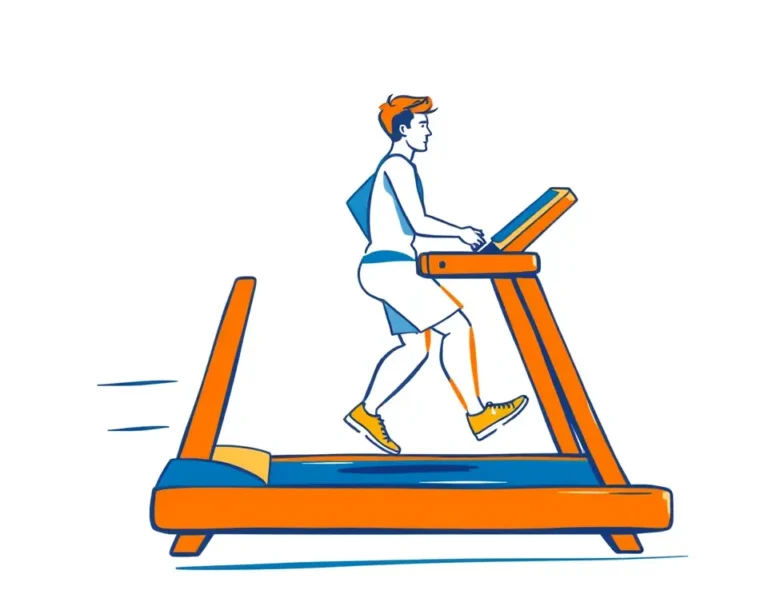The fitness world is constantly buzzing with new trends, and the 12-3-30 workout has certainly made a splash. This simple yet challenging treadmill routine, popularized by social media influencer Lauren Giraldo, has garnered attention for its potential to improve cardiovascular health, build lower body strength, and aid in weight loss. But what exactly is the 12-3-30 workout, and is it safe and effective for everyone? Let’s dive in.
Decoding the 12-3-30 Workout
The 12-3-30 workout is a treadmill-based exercise routine with a straightforward formula:
- 12: Set the treadmill incline to 12%. This simulates walking uphill, engaging your muscles more intensely.
- 3: Set the speed to 3 miles per hour (mph). This is a brisk walking pace for most people.
- 30: Walk for 30 minutes. Consistency is key to seeing results.
Lauren Giraldo credited this workout with helping her lose 30 pounds and overcome gym intimidation. She shared her routine on YouTube in 2019, but it went viral on TikTok in 2020, and has remained popular ever since.
Unveiling the Benefits of the 12-3-30 Workout
The 12-3-30 workout offers several potential benefits, making it an attractive option for many:
- Cardiovascular Health Boost: Walking on an incline elevates your heart rate, providing a cardiovascular workout that can improve heart health and endurance.
- Calorie Burning: Walking at a 12% incline burns significantly more calories than walking on a flat surface, which can contribute to a calorie deficit needed for weight loss. Studies have shown that incline walking can increase calorie burn by a significant percentage compared to level walking.
- Lower Body Strength Building: The incline engages major muscle groups in your legs, including your quads, hamstrings, glutes, and calves, helping to build lower body strength and improve muscle tone.
- Low-Impact Exercise: Unlike running, the 12-3-30 workout is low-impact, which means it’s gentler on your joints. This makes it a suitable option for individuals with joint issues or those who prefer a less intense form of cardio.
- Accessibility and Simplicity: The workout requires only a treadmill and doesn’t involve complex movements or routines. This makes it accessible to people of all fitness levels and easy to incorporate into a busy schedule.
- Improved Endurance: Over time, the 12-3-30 workout can help increase your stamina and endurance, making it easier to perform daily activities and other forms of exercise.
- Bone Health: The workout is beneficial for the bones, too.
- Mental Well-being: Like other forms of exercise, the 12-3-30 workout can boost your mood, reduce stress, and improve overall mental well-being.
Navigating the Risks and Safety Considerations
While the 12-3-30 workout offers numerous benefits, it’s essential to be aware of the potential risks and take necessary precautions:
- Risk of Injury: The steep incline can put stress on your lower back, hips, knees, ankles, calves and Achilles tendons, especially if you’re new to incline walking or have pre-existing conditions.
- Not Low Impact as You Think: This isn’t a low-impact workout, and it can stress the body more than you think. This also means that 12-3-30 could lead to injuries for anyone with hip, knee, or ankle issues.
- Overexertion: Walking at a brisk pace on a steep incline for 30 minutes can be challenging, and it’s easy to overdo it, especially if you’re not used to regular exercise.
- Monotony: The repetitive nature of the workout can become monotonous for some people, leading to boredom and decreased motivation.
- Balance and Coordination: The incline increases the balance demand.
Who Should Exercise Caution?
- Beginners: If you’re new to exercise, start with a lower incline and shorter duration, gradually increasing as your fitness improves.
- Individuals with Joint Issues: If you have pre-existing knee, hip, or lower back problems, consult with your doctor or a physical therapist before trying the 12-3-30 workout.
- Individuals with Heart Conditions: If you have a heart condition, talk to your doctor before starting any new exercise program, including the 12-3-30 workout.
- People with shin pain or shin splints: This training plan may not be for you.
- People with tight calves or hamstrings or low back pain: Be cautious doing prolonged incline.
Safety Tips:
- Warm-up: Before starting the workout, warm up with 5-10 minutes of light cardio, such as walking on a flat surface at a slower pace.
- Proper Form: Maintain good posture throughout the workout, keeping your back straight, core engaged, and shoulders relaxed. Avoid leaning on the handrails, as this reduces the intensity and can lead to poor form.
- Listen to Your Body: Pay attention to your body and stop if you experience any pain, discomfort, dizziness, or shortness of breath.
- Stay Hydrated: Drink plenty of water before, during, and after the workout to stay hydrated.
- Cool-down: After the workout, cool down with 5-10 minutes of walking on a flat surface at a slower pace.
- Proper Footwear: Wear supportive athletic shoes to prevent strain or injury.
Tailoring the 12-3-30 Workout to Your Needs
The 12-3-30 workout is not a one-size-fits-all solution, and it’s essential to tailor it to your individual fitness level and goals. Here are some modifications you can make:
- Adjust the Incline: If the 12% incline is too challenging, start with a lower incline, such as 3% to 5%, and gradually increase it as you get stronger. You can add one percent incline each week as your body adjusts to the added resistance.
- Modify with 8-3-30: You would set the incline at 8% while keeping the speed at 3 mph for 30 minutes.
- Adjust the Speed: If the 3 mph speed is too fast, slow it down to a comfortable walking pace.
- Reduce the Duration: If you can’t walk for 30 minutes continuously, break it up into shorter intervals with rest periods in between.
- Add Intervals: You can also incorporate interval training by alternating between periods of incline walking and flat walking or faster and slower paces. For those who need to modify the workout, do one minute at level 12 at 3 miles per hour, and then do two or three minutes at level 5 at 2.5 miles per hour. Then, alternate between these two levels until you hit 30 minutes.
- Try a 10- or 15-minute incline walk: Spend one minute at a 6% incline and then the next minute at a 3% incline. This allows you to get some active recovery time. Try switching between 3% and 7% after one week, adding a few more minutes to the workout.
Alternatives to the 12-3-30 Workout
If you don’t enjoy the 12-3-30 workout or don’t have access to a treadmill, there are plenty of other effective cardio exercises you can try:
- Outdoor Walking or Hiking: Walking or hiking outdoors provides a similar cardiovascular workout and allows you to enjoy the fresh air and scenery.
- Elliptical Training: The elliptical machine offers a low-impact cardio workout that engages your entire body.
- Stair Climbing: Using a stair-climbing machine or climbing stairs is a great way to build lower body strength and improve cardiovascular fitness.
- Cycling: Cycling is another low-impact cardio exercise that can be done indoors or outdoors.
- Rowing: Rowing is a full-body workout that engages your arms, legs, and core.
The Final Verdict
The 12-3-30 workout can be a safe and effective way to improve your cardiovascular health, build lower body strength, and aid in weight loss. However, it’s essential to approach it with caution, especially if you’re new to exercise or have pre-existing conditions. Start slowly, listen to your body, and make modifications as needed. Remember to incorporate variety into your fitness routine to avoid boredom and reduce the risk of injury.
Ultimately, the best workout is the one that you enjoy and can stick with consistently. Whether it’s the 12-3-30 workout or another form of exercise, find an activity that you find motivating and that fits into your lifestyle.







